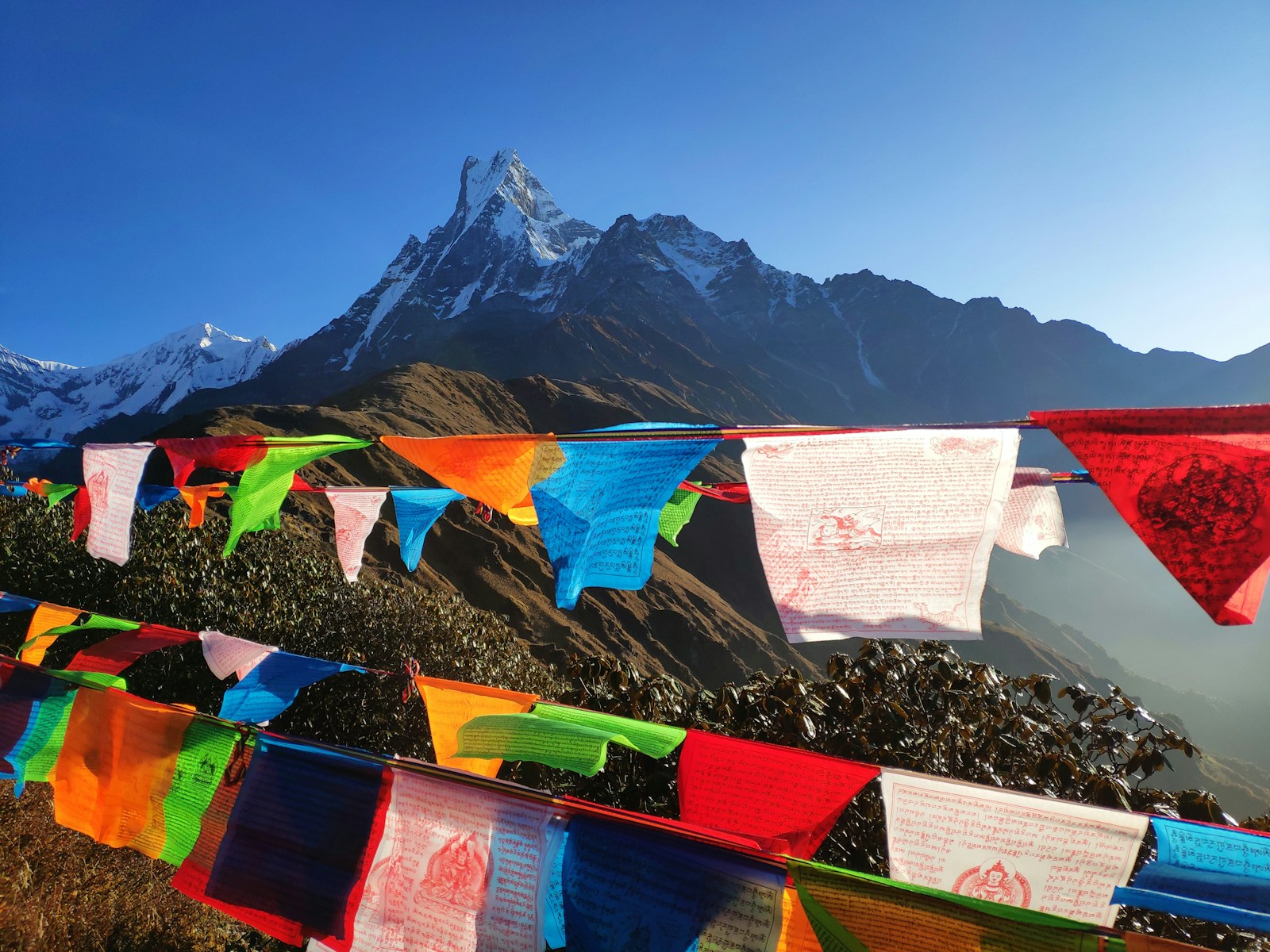
7 Interesting Facts About The Tsum Valley
Posted on: Monday, January 20th, 2025.The Tsum valley is considered the hidden valley in the Manalsu region of Gorkha. It is also called the land of Buddhism which occupied a couple of ancient monasteries that were restricted to outsiders since 2008. Moreover, this place lies on the Nepal side near the Tibetan border making you feel like you are in another world.Historically, Tsum valley used to be separate from both Nepal and Tibet and completely away from modern society.The entire Tsum valley is magnificent, yet less exposed in comparison to other trekking destinations in Nepal. Moreover, people in this region follow their traditions.
The lifestyle here is completely different from the other parts of Nepal. The culture of this region is the most interesting fact of Tsum valley that could be interesting for many foreigners. The trail leads to the right side of the narrow hidden alley. Travelers can get blessed with ancient Buddhist Monasteries along with popular Milarepa’s cave and centuries-old Mu Gumpa.When you trek on the beaten paths and less explored region of Tsum valley, it takes you close to the mesmerizing mountains like Ganesh Himal, Sirigi Himal, and Boudha Himal range.From incredible landscape to unique culture, Tsum valley has it all. Here are 7 interesting facts about Tsum valley that make you realize why it is called a hidden valley of Nepal.
Space to study Buddhism
Tsum valley is a sacred place for Buddhism which is home to Himalayan tribes called Tsumba. Out of the eight sacred valleys in the Himalayas, especially the islands of it, Tsum Valley is one of them. There are predominant caves and monasteries from centuries that are looked after by monks and nuns. Those with an interest in primitive Buddhism can closely study the monastery throughout the journey. The flat smokey Tsum valley begins from Chhokangparo and spans up to Mu Gompa a few miles from Tibet. The ravine is home to Buddhism. Rancher Gomba, Dephyu Donna Gomba, Mu Gomba, Gompa Longgang, Nunnery Gomba, Milarepa cave, and other small Buddhist sites are great sources to study Tibetan Buddhism. All the ancient caves are ideal places to study prominent Eastern religions. The Monks and Lamas will assist you to explain the fundamentals of this ancient practice and also guide the meditating way on the scenic background.
History and Culture
In the past, this hidden valley was known as the Buddhist kingdom that still exists in the surrounding area. In the caves of the Tsum Valley, a great Buddhist saint named Milarepa is believed to have meditated. On the upper and lower sides, there are two villages called Chhakampar and Churches. There are Tibetans in this region who speak an uncommon Tibetan dialect. The Buddhist festivals celebrated here include Losar and Saka Dawa. This mesmeric valley has remarkably preserved its culture, history, and traditions. Polyandry marriage systems are a common practice in Tsum valley that may be the most interesting fact to many outsiders.
Based on their origins, the people of Tsum valley are called Tsumbas. Tumbas, who was heavily influenced by Tibetan practices, have their dialect, culture, and customs. The brothers of the Tsumbas family all have a single wife. They are not part of modern society. Due to the valley’s historical ties to Tibet, Tsum valley residents are of Tibetan descent.
Sense of Authenticity
Due to its remoteness and inaccessibility, this sacred valley and its people, Tsumba, have been bypassed by mainstream development for centuries. As a result, the unique culture of this valley has remained intact. The appeal of Tsum valley is the special mix of Nepal’s best contributions, various conventional societies, and cordial individuals making this traveling trail exceptional. What’s more, among the adventurers in the Manaslu area, a couple of circuits in the Tsum valley even in this high season. A considerable lot of the landmarks and customs have been safeguarded. Antiquated Buddhist cloisters, for example, the Mu Gumpa are alongside the Rachen Nunnery, only available in Tsum Valley. Exploring Tsum valley is worthwhile for those looking to get lost in the extreme remoteness of Nepal Himalayas.
A Peaceful Trail
It may be the best trip of your lifetime to make a trek to Tsum Valley away from the bustling destination. The remote setting of the Tsum valley makes it one of Nepal’s most distinctive regions, not only within the Manaslu region but across the country. Trekkers in this region can enjoy a peaceful and less crowded journey because of the area’s trekking restrictions. Many trekkers like the idea of having the trail all to themselves. In contrast, busy trials fail to entertain those who prefer tranquility. Travelers can expect a completely peaceful trail and feel the reflection of their hearts. Autumn, especially October, is considered the peak season for trekking in Nepal, but you will meet fewer travelers even in the less busy season. If you wish to wanderlust into the least explored and remote region of Nepal Tsum Valley must be next on your bucket list.
Wildlife Beauty
Throughout the journey to Tsum valley, travelers can see a variety of wildlife, from flora to fauna. Animals are highly protected here since no one sacrifices them. The remote destination is uniquely rich in wildlife, especially the Himalayan Tahr (type of a wild goat), and blue sheep. Musk deer, Ghoral, and snow leopard are also found along the trailside. Hunting and fishing are not allowed in Tsum valley. If you are highly interested in viewing wildlife beauty, Tsum valley is the best place to visit that will introduce you to some of the rarest flora and fauna available.
Ancient Cave and Sacred Monasteries
The Tsum valley is a living museum of Buddhism where people still follow values and practices in their day-to-day life. According to Buddhist mythology, Guru Milarepa meditated in the valley as he was on his mission to travel, understand, and teach Buddhism to the Locals. The cave where the saint meditated is now a sacred cave that still has his footprints preserved and is noticeable in the rocks. A part of the valley is decorated with prayer flags, monasteries, mani walls, and mani stones. The Mu Gompa of the region is located at the altitudes of 3361m, which offers a panoramic Himalayas view of the vintage monastery. There are other ancient monasteries such as the Rachen Gompa and Dephydonma Gompa that are also the popular sacred monasteries of this valley.
Magnificent view for the eyes and the camera
The untouched beauty of Tsum valley is truly heavenly. Trek on the background of snow cover Ganesh Himal, Himchuli, Church, and Manaslu can be seen on the entire journey to Tsum valley. The vividness of the valley lets you experience its vibrant nature, colorful meadows, crimson rhododendron forests, yellow Mustard fields, and pink and white buckwheat fields. Its landscape is an incredible spot for nature photographers.
Tsum valley, a picturesque Buddhist land, is more on the adventurous side yet blessed by natural beauty and unique culture. Not to be forgotten just because it is one of the least explored regions of Nepal, visit it once in your lifetime. If you have some extra time on your trip, extend it to the Manaslu circuit and also to the Ganesh Himal base camp.To the ones with a loaded spirit of exploration, make Tsum valley a part of your destiny. You will not only be mesmerized by the natural beauty, but also by the people and culture. Although you may not understand their language, Tsumbas, the natives of Tsum valley, will build a space in your heart with their pure soul and innocent gesture.Tsum valley is therefore a paradise on Earth and a beautiful creation of nature. It will be hard to find such purity and a heartwarming smile anywhere else on this Earth- from nature and the people here.

